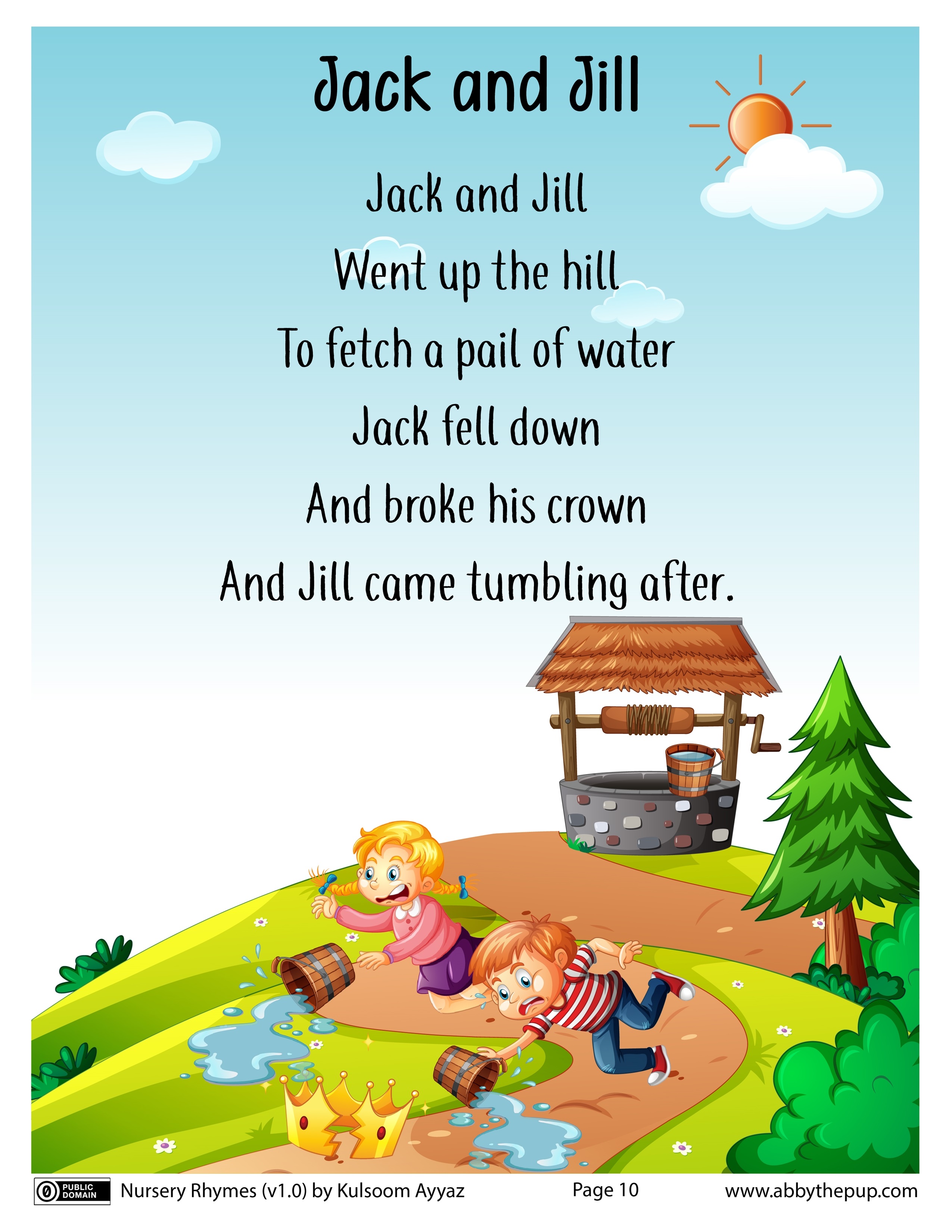The English nursery rhyme “Jack and Jill”, as originally recorded in the 18th century, consisted of just a single verse, but reprinted in 19th-century chapbooks it was gradually extended to fifteen verses; the second verse as known today is probably a legacy of that expansion.[1]
The best-known version of the rhyme today is:
Jack and Jill went up the hill
To fetch a pail of water;
Jack fell down and broke his crown,
And Jill came tumbling after.Jack got up, and home did trot,
As fast as he could caper,
To old Dame Dob, who patched his nob,
With vinegar and brown paper.[1]
The earliest published version appears in John Newbery’s Mother Goose’s Melody, published in about 1765, but the folklorists Iona and Peter Opie have proposed that the rhyming of water with after suggests that the rhyme may date from the first half of the 17th century.[2]
The phrase “Jack and Jill”, meaning “boy and girl” predates the rhyme, as seen in Shakespeare’s Midsummer Night’s Dream, written in about 1595: “Jack shall have Jill, Nought shall go ill” (Act III scene ii). Although it may at first sight seem odd to be going uphill in search of water when it normally flows downhill, the historian Edward A. Martin notes that water may have been collected from dew ponds on the top of hills during times of drought.[3]
Interpretations
The many “implausible origin theories”,[4] which attempt to root the nursery rhyme in antiquity or magic, have according to the Opies, received “undue notice”.[1] Among such theories is the idea proposed by the clergyman and antiquarian Sabine Baring-Gould (1834–1924) in his Curious Myths of the Middle Ages, published in 1866. He identified Jack and Jill as being the brother and sister Hjuki and Bil, the main protagonists in Gylfaginning, an ancient Norse tale collected by Snorri Sturluson (1178–1241). As the children were drawing water from a well one dark night they were captured by the Moon, where they can still be seen today during a full Moon.[5]
Among the suggested political interpretations is that Jack and Jill represent Empson and Dudley, two of King Henry VII’s ministers who were executed shortly after the accession of Henry VIII.[6] Or perhaps Louis XVI and his queen Marie Antoinette, both of whom lost their heads at the guillotine, but for which the supporting evidence seems very slight.[7]
Kilmersden, a small village in Somerset, has also laid claim to being the origin of the nursery rhyme. Local legend has it that in 1697 a young unmarried couple did much of their courting on a local hill, away from prying eyes. Jill subsequently became pregnant, and after Jack was killed by a rock fall she died in childbirth just a few days later.[8][9]
But of course “Jack and Jill” may simply be a nonsense rhyme intended to amuse young children. To quote the words of A Dictionary of English Folklore “Nursery rhymes have suffered the indignity of having more nonsense written about them than any other folklore genre”.[10]

